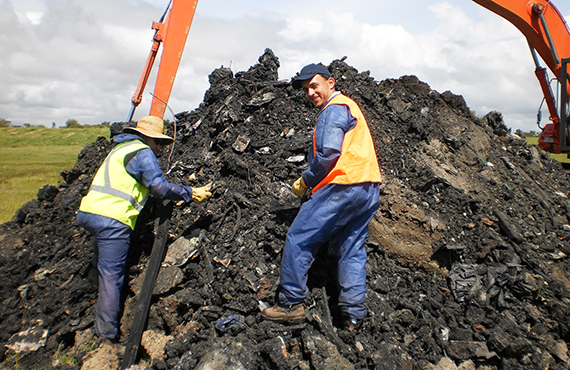
Research on carbon release from decomposition of wood and paper products
Each year in Australia approximately 3 million tonnes of wood and paper products are sent to landfills. As organic materials decay in landfills they release the greenhouse gases methane and carbon dioxide. Methane is a powerful greenhouse gas, 25 times more potent than carbon dioxide.
Until recently it had been assumed that as much as 50 per cent of the carbon in wood products was released from landfills as greenhouse gases. However, research conducted by NSW DPI challenged those assumptions.
The research involved excavations of a number of landfills in New South Wales and Queensland and the analyses of hundreds of samples. The work also included extensive experimental work in the lab.
As a result, the DPI team was able to propose a much lower decay factor for wood products, with a loss of only 1.4 per cent of the carbon in the wood and wood products over a very extended period.
This study indicates that even when timber and wood products are eventually disposed of most of the carbon remains stored.
It also confirms the positive greenhouse credentials of wood products, even when placed in landfills.
The decay factors generated by the DPI team have been recently presented to the Intergovernmental Panel on Climate Change (IPCC) and after thorough examination they have been included in the IPCC Emission Factors Database, for use by countries around the world.
The research has direct implications for national greenhouse gas inventories; carbon abatement programs and the environmental foot print of forest products.
More information on the research is available from the journal Carbon Balance and Management: Carbon dynamics of paper, engineered wood products and bamboo in landfills: evidence from reactor studies


